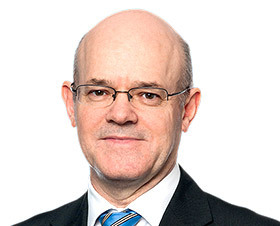
Centrica Energy’s boss spelled out the reasons behind the oil and gas giant’s decision to scale back its upstream operation.
Mark Hanafin, was talking after Centrica confirmed it would reduce its headcount by 6,000. It will also shave £1.5billion off its exploration and production (E&P) costs over the next five years.
He blamed a volatile energy sector and falling oil and power prices for the radical overhaul of its E&P activities.
Hanafin said upstream remained important to Centrica’s balance sheet, but it would be scaled back.
Despite shrinking, he said cutting costs in the supply-chain and the ultimate recovery in oil prices – at some point – would deliver cash flow growth.
He added: “The world has changed, the coal plants are closing, the markets are much more liquid.
“We’ve decided that it [E&P] is providing a very valuable role, it does provide scale and robustness to our balance sheet to balance the very large commitments in the downstream, but it doesn’t need to be as big as it is.
“We decided it needs to be about a third smaller than it is today.”
Centrica currently produces around 75million barrels of oil equivalent (boe) each year. Hanafin said this could be reduced to between 40-50million boe, significantly reducing capital expenditure (capex).
North Sea activity will remain a significant part of the business.
Hanafin said: “We have some important assets in the Netherlands and in the UK. We will need to optimise those. We will need to continue operating them, getting the most from them in terms of operational efficiency, but the bulk of our capex for maintaining the size of the business will be targeted at Norway where we’ve developed an excellent business.
“Canada should be non-core going forward…the North American market has changed quite dramatically with the collapse in oil prices at the beginning of the year. It’s dragged down oil and gas prices quite significantly in North America.”
Hanafin anticipated strong growth in Liquid Natural Gas (LNG). He also saw opportunities in distributed energy.
He added: “When you consider the elements of distributed energy from energy efficiency, flexible generation, new technologies like battery storage, energy management systems, and all of the trading and optimisation that goes with that, we’re very well positioned for those trends.”
Recommended for you
